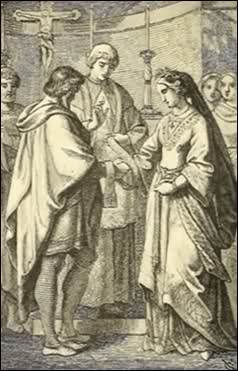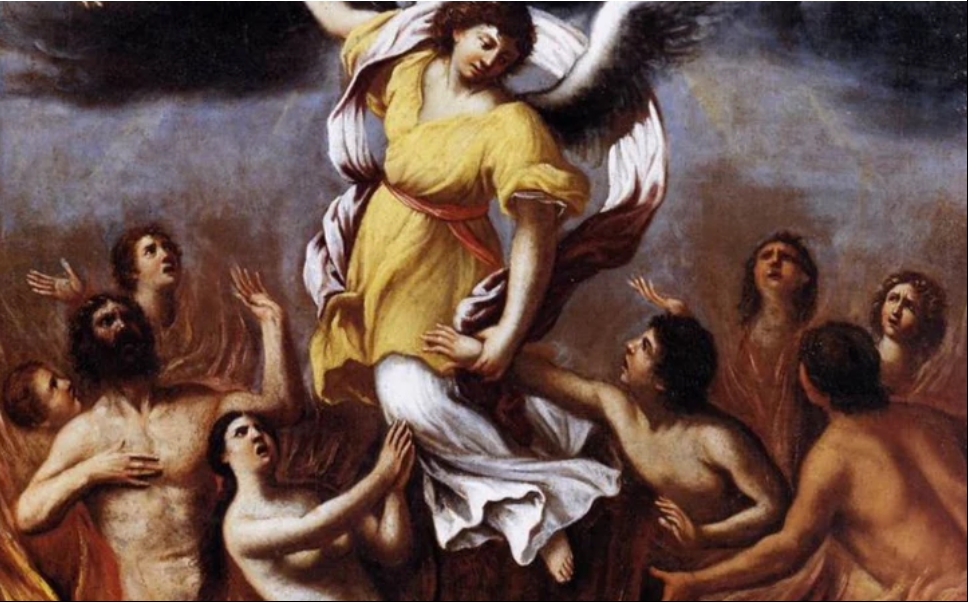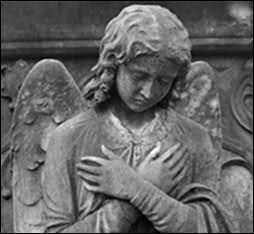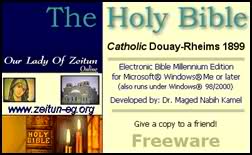Symbols and Attributes 0f The Virgin Mary
 The Star often embroidered on the right shoulder of the Virgin’s mantle or in front of her veil refers to the most expressive of her many titles, Stella Maris, “Star of the Sea,” an interpretation of her Jewish name Miriam. Several pictures are called La Madonna della Stella. She is also Stella Matutina, the “Morning Star”; Stella non Erratica, the “Fixed Star”; and Stella Jacobi, the “Star of Jacob.”
The Star often embroidered on the right shoulder of the Virgin’s mantle or in front of her veil refers to the most expressive of her many titles, Stella Maris, “Star of the Sea,” an interpretation of her Jewish name Miriam. Several pictures are called La Madonna della Stella. She is also Stella Matutina, the “Morning Star”; Stella non Erratica, the “Fixed Star”; and Stella Jacobi, the “Star of Jacob.”
The Sun and the Moon. “Who is she that looketh forth as the morning, fair as the morn, clear as the sun” (Solomon’s Song, vi. 10). This text is applied to the Virgin and she is also the woman of the Apocalypse, “A woman clothed with the sun, having the moon under her feet, and on her head a crown of twelve stars.” Hence she is portrayed with the glory of the sun about her, and the crescent moon beneath her feet.
The Enclosed Garden is a symbol borrowed from the Song of Solomon (Cant. iv. 12) as well as a Fountain Sealed, a Well of Living Waters, the Tower of David, the Temple of Solomon, and the City of David.
The Porta Clausa or Closed Gate is taken from Ezekiel (xliv., 2).
The Lily, the Rose. “I am the rose of Sharon, and the lily of the valleys” (Cant. ii., i).
The Palm, the Cypress, and the Olive are all emblems of the Virgin. The first signifies victory, the second points to heaven, and the third denotes peace, abundance, and hope.
The Cedar of Lebanon (“exalted as a cedar in Lebanon”), because of its imperishable nature, its perfume, its healing qualities, and its great height, denotes also the virtue, greatness, and beauty of the Virgin.
The Sealed Book, as a symbol in the hands of the Virgin, refers to the text: “In that book were all my members written”; also to the “book that is sealed which men deliver to one that is learned, saying, Read this, I pray thee: and he saith, I cannot, for it is sealed: And the book is delivered to him that is not learned, saying, Read this, I pray thee: and he saith, I am not learned” (Is. xxix., 11-12).
Besides these symbols, which are mystical and sacred and belong only to the Virgin, there are others of a more general nature that appear in pictures of the Madonna and Child.
The Globe, as the symbol of sovereignty, was early placed in the hands of the divine Infant. When it is under the feet of the Madonna with a serpent twining about it, it is the symbol of redemption.
The Apple, in the hands of the Infant Christ, symbolizes the fall of man; in the hands of the Virgin it indicates that she is the second Eve.
The Serpent is the general emblem of Satan and sin, but it is used in reference to the prophecy, “She shall bruise thy head,” when placed under the feet of the Madonna.
The Pomegranate, the ancient symbol of hope, is often placed in the hands of the Child, who is seen presenting it to His mother.
The Book, when the Madonna holds it open, or has a finger between the leaves, or when the Child is turning the pages, is the Book of Wisdom, and is supposed to be open at the seventh chapter. When clasped or sealed, as before explained, it is a mystical emblem of the Virgin herself.
Birds represent the soul. The Dove is the Holy Spirit hovering about the Virgin. The Seven Doves, typifying the gifts of the Spirit, when they surround the Virgin, characterize her as Mater Sapientia, “Mother of Wisdom.” Doves near her when she is working or reading in the Temple express the meekness and tenderness of her nature.
Certain women of the Old Testament are regarded as especial types of the Virgin, viz.: Eve, Rachel, Ruth, Abishag, Bathsheba, Judith, and Esther, and it is because of this that these Jewish heroines so often appear in religious pictures.
The correct and traditional dress of the Virgin is a blue robe or mantle worn over a close red tunic with long sleeves. In early pictures her head is veiled and the colors are pale and delicate. The enthroned Madonna unveiled was introduced about the end of the fifteenth century.
In the historical pictures she is simply dressed, but in the devotional pictures wherein she is portrayed as the Queen of Heaven, she wears a magnificent crown wrought with jewels interwoven with roses and lilies; her blue robe is richly embroidered with gold and gems, and lined with ermine or stuff of gorgeous colors, carrying out the text: “The king’s daughter is all glorious within; her clothing is of wrought gold. She shall be brought unto the king in raiment of needlework” (Ps. xlv., 13-14).
In the Immaculate Conception and the Assumption, the Virgin wears a white tunic, or white strewn with gold stars. In all subjects that relate to the passion and those that follow the crucifixion she should wear violet or grey. This rule is not always followed, however.
Sacred Symbols in Art
Elizabeth E. Goldsmith
1911


























































Leave a comment